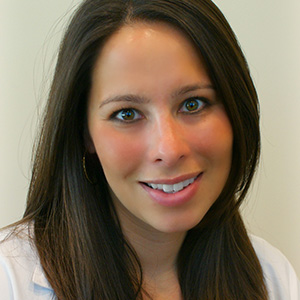Glaucoma Facts and Stats
Glaucoma is often misunderstood, with many people unaware of its severity or who it affects.

Staying informed about the latest facts and statistics on glaucoma is essential for those affected by this eye condition and those looking to preserve their vision, as early detection and proper management can prevent significant vision loss.
By staying up-to-date on risk factors, treatment advancements, and screening recommendations, individuals can make informed decisions about their eye health.
Furthermore, understanding the latest research can help patients explore new therapies, participate in clinical trials, and adopt lifestyle changes that may slow disease progression. Awareness also promotes regular eye exams, which are crucial for early diagnosis, especially for those at higher risk due to factors such as age, family history, or specific medical conditions.
Four Key Facts About Glaucoma
1. Glaucoma Is a Leading Cause of Blindness
If left untreated, glaucoma can lead to blindness. However, with early detection and advanced modern treatments, blindness is now considered a rare outcome of the condition. In developed countries, only five percent of glaucoma patients experience vision deterioration severe enough to result in legal blindness, and even fewer go completely blind. This success in preventing vision loss highlights the importance of early detection and consistent management, as while vision loss can often be prevented, it cannot be reversed.
2. There Is No Cure for Glaucoma — Yet
Currently, there is no cure for glaucoma, and vision loss caused by the disease’s progression is irreversible. However, medications and surgical treatments can help slow or halt further vision deterioration. Since open-angle glaucoma is a chronic condition, lifelong monitoring is essential — and highly effective. Early diagnosis is crucial for protecting your eyesight!
3. Everyone Is at Risk for Glaucoma
Glaucoma can affect individuals of all ages, from newborns to seniors. Although older adults are at higher risk, about 1 in 10,000 babies in the U.S. are born with glaucoma. Young adults can also develop the condition, with African Americans experiencing higher rates of glaucoma at younger ages.
4. Glaucoma Often Develops Without Symptoms
Often referred to as the “silent thief of sight,” open-angle glaucoma, the most common form of the disease, has no warning signs before vision is noticeably affected. This painless condition typically begins with the loss of peripheral vision, making it hard for patients to detect changes until the condition has significantly advanced. The best way to protect your sight is through regular eye exams. If diagnosed early, appropriate treatment can help slow or even prevent further vision loss.
Important Statistics About Glaucoma
- Prevalence in the United States: Around 4.22 million people in the U.S. have glaucoma, and nearly half are unaware of their condition.
- Causes of Blindness Worldwide: Despite advancements in modern treatments, glaucoma continues to be a leading cause of blindness worldwide, responsible for 9% to 12% of cases, affecting approximately 5.9 million people. This ranks it as the second leading cause of blindness globally, following cataracts.
- Global Prevalence: As of 2020, approximately 80 million people worldwide have glaucoma, with 60 million affected by open-angle glaucoma.
- Impact on African Americans: Glaucoma-related blindness is 6 to 8 times more prevalent in African Americans than in Caucasians.
- High-Risk Groups: People over 60, those with a family history of glaucoma, diabetics, and individuals with severe nearsightedness face a higher risk.
Key Findings on Glaucoma Awareness and Eye Health
A survey of over 1,000 participants conducted by the Glaucoma Research Foundation revealed the following insights:
- Routine Eye Exams: 74% of participants reported having their eyes examined at least every two years.
- Dilated Eye Exams: Only 43% of respondents reported having dilated eye exams, the most effective method for detecting glaucoma.
- Awareness Gaps:
- 16% of African Americans surveyed were unaware of glaucoma as a condition.
- 9% of Caucasians surveyed were unaware of the conditio
A Prevent Blindness America survey highlights further concerns:
- Fear of Blindness: Blindness is ranked the third most feared health concern, following cancer and heart disease.
- Understanding Glaucoma:
- Many of the individuals surveyed incorrectly believed that glaucoma has noticeable symptoms, is easily treatable, or does not cause blindness.
- 50% had heard of glaucoma but were uncertain about what it is.
- Few people are aware that increased pressure within the eye plays a role in the development of glaucoma.
Glaucoma’s Economic Impact
The financial burden of glaucoma on the US economy is estimated at $2.86 billion annually.
Costs associated with glaucoma include direct medical expenses such as diagnostic testing, medications, surgeries, and ongoing ophthalmic care. The condition contributes to over 10 million physician visits each year.
However, indirect costs often exceed direct costs, as vision loss can lead to decreased productivity, job loss, and increased dependency on social support services.
In aging populations, glaucoma-related blindness can result in higher rates of falls, injuries, and long-term care needs, further driving up healthcare costs. Additionally, the loss of independence among those affected can diminish quality of life and place financial and emotional strain on caregivers. Early detection and effective management of glaucoma are crucial in preserving vision and minimizing these significant economic consequences.
Help Us Find a Cure
Understanding your eyesight is crucial for maintaining overall health and quality of life. Early detection of vision problems can help prevent serious issues, such as vision loss or complications from glaucoma. Regular eye exams not only keep your vision sharp but also detect signs of systemic health conditions like diabetes and high blood pressure. Being aware of how your eyes function and noticing any changes in your vision enables you to take proactive steps, ensuring you receive the appropriate care and treatment when necessary.
If you haven’t had an eye exam recently, schedule one today. Protecting your vision begins with understanding your eye health.
Although there is no cure for glaucoma yet, ongoing research continues to bring us closer to finding one and restoring vision loss. You can contribute to this effort by donating cash, stock, or a vehicle. Your support will provide hope to those affected by glaucoma and help speed up the search for a cure and vision restoration..
The dedicated efforts of researchers are advancing our understanding of glaucoma every day. This progress brings hope for new and improved treatments, including innovative drug delivery methods, laser therapies, and less invasive surgical options. You can help make these advancements a reality!
Last updated on March 12, 2025. Article reviewed for medical accuracy by Lisa M. Young, OD, FAAO.

Lisa M. Young, OD, FAAO
Lisa M. Young, OD completed a primary care and ocular disease residency at the Illinois College of Optometry. She is a member of the Optometric Glaucoma Society, and a fellow of the American Academy of Optometry. She is an adjunct assistant professor at the Illinois College of Optometry and Chicago College of Optometry at Midwestern University.